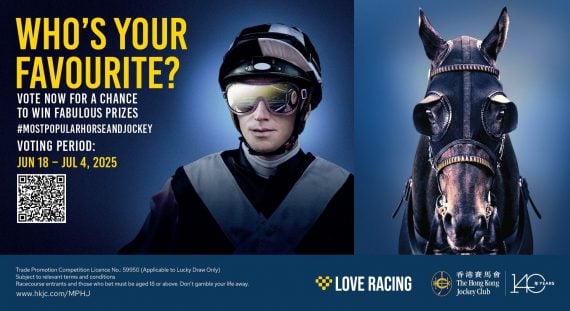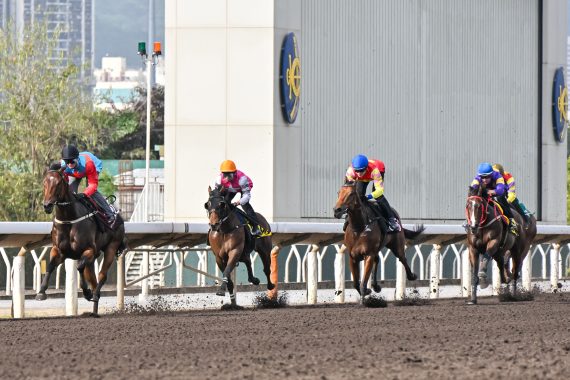Just because it has a favourable barrier draw can you include a formless 33/1 longshot in your PA perm, or make it a double floating banker in your quartet? There are times when such seemingly outrageous actions pay astonishing dividends. An awareness of favourable draw positions at the Vaal Sand is an effective tool contributing to astute betting. Barrier draw positions are often spoken of pre race and sometimes post race. Many horseplayers know that high draws over 1000m and low draws over 1200m and 1450m are favourable. This is explored in greater detail below.
The primary focus throughout is the identification of draws that finish in the first 3 places thereby qualifying for such bets as the Place Accumulator. The charts show, by percentage, how each draw has performed in the number of races that it has run. Simply put, with reference to chart 1A below, from 527 runs draw 1 has finished in the first three 21% of the time. (In each chart the median indicates the midpoint of the resulting figures).
The charts detail the performances of each draw over specified distances. With over 400 races for each distance the analysis is statistically sound and provides a good degree of accuracy. Over and above this, the size of the fields and any changing circumstances over the nine years of sand racing are taken into account in an effort to determine trends and patterns currently affecting the draw – such analysis is ongoing and open to continued interpretation.
VAAL SAND 1000m
 With the 1000m straight races only, this direct presentation, whilst factual, appears jumbled and offers little assistance in identifying favourable draws.
With the 1000m straight races only, this direct presentation, whilst factual, appears jumbled and offers little assistance in identifying favourable draws.
However, a clearer perspective is achieved by reversing the draw positions, i.e. in a 12 horse field draw 12 becomes draw 1 against the stand side rail, draw 11 becomes draw 2, and so forth with draw 1 becoming draw 12 against the inside rail.
Utilising the reverse order format, chart 1B then shows clearly that those drawn on the stand side have a distinct advantage. This was apparent from the start of sand racing at the Vaal.
Over the last three years the performance of low draws has improved. Following the surface renovations (Oct/Nov’09), there is a ‘hint’ that the low draws (1+2 against the inside rail) are now on equal terms. High draws still feature, yet not with the same superiority, the middle draws also achieve their fair share of places.
Therefore, at this time no draw bias affecting the 1000m race is evident.
VAAL SAND 1200m
In contrast, with regard the 1200m as illustrated in chart 2, it is clear that low draws have a notable advantage, which has applied since 2001. The most favourable draws are 1+2, followed by 3,4+5. This advantage is prominent in fields with 8-12 runners. Whilst draws 6-12 are unfavourable, they are not dismissible.
VAAL SAND 1450m
Of all the distances, the results for the 1450m, as seen in chart 3, demonstrate the most significant draw bias at the Vaal Sand. Draws 1+2 are the most favourable, followed by draws 3,4+5 Whilst as a cluster, draws 11-14 are the most disadvantaged.
This low draw advantage has always prevailed. When the distance was changed from 1400m to 1450m (June’08) and field sizes increased from 12 to 14 runners, it initially seemed the draw bias had altered. It transpired that this was temporary and it remains to date as significant as ever.
Draws 1-5 are most favourable, and most prominently so in fields with 11-14 runners, and still preferable in fields with 8-10 runners.
VAAL SAND 1600m
In complete contrast to the 1450m, the results for the 1600m, shown in chart 4, reveal no significant pattern or draw bias.
SAND SNIPPETS INTERFACED WITH THE DRAW
Course Variations: Whilst the going is usually stated as ‘standard’, course variations exist – a wet surface produces faster times and a dry, looser surface slower times. A common peculiarity is that the first race on the card is often faster, against its standard time, than the subsequent races. However, a correlation between the ‘going’ (course variations) and favourable/unfavourable draws has yet to be found. Neither has it become apparent with regard races of different class.
‘Horses for Courses’ is a most applicable maxim to Vaal Sand racing. Many good turf performers have floundered whilst proven sand contenders flourish. A simple way to identify and rate a horse in this regard may be to review the course and course/distance runs allocating points for 1st, 2nd and 3rd places. For example: – Say 30-20-10, and divide the total by the number of runs for each category.
Course runs 7: 1-1-2 = 10 points, (1×30 +1×20 + 2×10 =70 divided by 7 =10).
Course/distant runs 5: 0-0-2 = 4 points, (0 + 0 + 20 =20 divided by 5 = 4).
This whole process could be a relatively quick and easy way to rate a race card.
It is well worth noting, from the past performances, how the horse has run relative to favourable or unfavourable draws.
Running styles and pace: Especially important at the Vaal Sand – recently, Bullion Fever became the first horse to win a 1450m race from draw 14 (remember this being among the most disadvantaged draws at the course). In her previous 4 course runs, all over 1450, she was drawn: – 12 out of 13, 11 out of 14, 8 out of 13, and 12 out of 14, yet managed two 2nds and two 3rds. So draw 14 was not a disadvantage for her when she won on 22 July, as she had always previously stayed on at the finish.
Another recent race, 9th September, over 1450m saw the 2nd horse Ice Crusher (draw 14) on the inside rail challenging the winner Cannon ‘n Cordite (draw 5), whereas Combera Boy (draw 1) was outpaced early, yet finished well on the stand side to take 4th – the latter could not take advantage of a very favourable draw whilst the runner-up performed exceptionally well from a poor draw.
THE DRAW BIAS IN ACTION
When Phunyuka beat Galahad and Renegade in last years August Stakes (29Aug. race 9) horseplayers holding ‘live’ PA tickets with those selections were in for a bumper dividend of R30 463 (or part thereof) – results listed below with draws.
| RACE | DIST | RAN | 1st | 2nd | 3rd | FAV | ||||||
| DRAW – SP | DRAW – SP | DRAW – SP |
POS |
DRAW – SP | ||||||||
| LEG | 1 | 3 | 1450 | 14 | 1 @ 4/1 | 3 @ 5/1 | 4 @ 15/2 | 5th | 11 @ 33/10 | |||
| LEG | 2 | 4 | 1450 | 9 | 2 @ 50/1 | 1 @ 66/1 | 9 @ 50/1 | 6th | 4 @ 7/10 | |||
| LEG | 3 | 5 | 1450 | 11 | 1 @ 13/1 | 4 @ 18/10 | 6 @ 7/1 | 2nd | Placed 2nd | |||
| LEG | 4 | 6 | 1450 | 11 | 5 @ 12/1 | 4 @ 7/2 | 1 @ 16/1 | 7th | 6 @ 33/10 | |||
| LEG | 5 | 7 | 1000 | 11 | 8 @ 18/1 | 11 @ 12/1 | 7 @ 12/1 | 4th | 10 @ 2/1 | |||
| LEG | 6 | 8 | 1600 | 9 | 9 @ 9/2 | 2 @ 6/1 | 1 @ 6/1 | 4th | 5 @ 22/10 | |||
| LEG | 7 | 9 | 1200 | 12 | 2 @ 12/1 | 1 @ 15/10 | 8 @ 7/1 | 2nd | Placed 2nd |
Knowing that draws 1 and 2 are the most favoured for both the 1200m and 1450m, then including them (highlighted) in the PA does not seem so outrageous (personal selections in legs 5+6 [blue]).
An awareness of the draw bias prompted a quartet bet in the Maiden event below over 1450m (race 3 – 22ndJuly) which involved double floating bankers 2+7 with 1-4-5-13. The full winning dividend was R39 320.
| NO. | HORSE | DRAW | POS | Dist | SP | ||
| 4 | SHOPPER CHALLENGE | 5 | 1 | 0 | ..22/1 | ||
| 13 | SERMON | 7 | 2 | 1.75 | .16/10 | ||
| 7 | FLEETWOOD BOY | 3 | 3 | 5.5 | ..66/1 | ||
| 2 | THREE KINGS | 1 | 4 | 6 | …7/1 | ||
| 8 | ROBBEN ISLAND | 10 | 5 | 6.25 | |||
| 5 | THUNDERBOLTEXPRESS | 2 | 6 | 8 | |||
| 9 | JEFF JUKE | 14 | 7 | 15.75 | |||
| 10 | LEMON FIZZ | 9 | 8 | 16 | |||
| 6 | LOS LOBOS (BRZ) | 11 | 9 | 20 | |||
| 11 | OBVIOUS INTENTIONS | 12 | 10 | 23 | |||
| 16 | CALAMONDIN | 6 | 11 | 25 | |||
| 1 | MOON WORLD | 8 | 12 | 33 | …2/1 | FAV | |
| 3 | RUGEN | 13 | 13 | 44 | |||
| 15 | SILVER ASSASIN | 4 | 14 | Dist |
Such wins may be few and far between, yet both the above bets included longshots based purely on their favourable draws.
Lastly, it is important to keep barrier draw knowledge at the Vaal Sand in perspective. There will be days when many of the results have a ‘draw logic’ to them. There may be many, many more days when such logic is indiscernible and even unrecognisable. Furthermore, this may go on over an extended period of time resulting in a loss of faith in the concept of favourable barrier draw positions!
Nevertheless, draw analysis provides a scientific approach – though rarely applied in isolation.
Horseplaying remains an art, and an awareness of its multifaceted dynamic nature helps one on the way to mastery.












